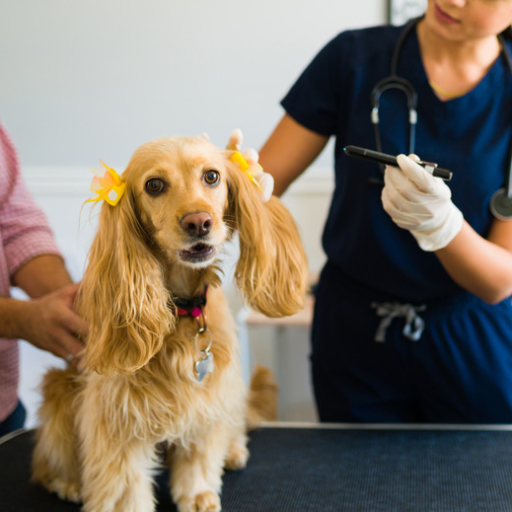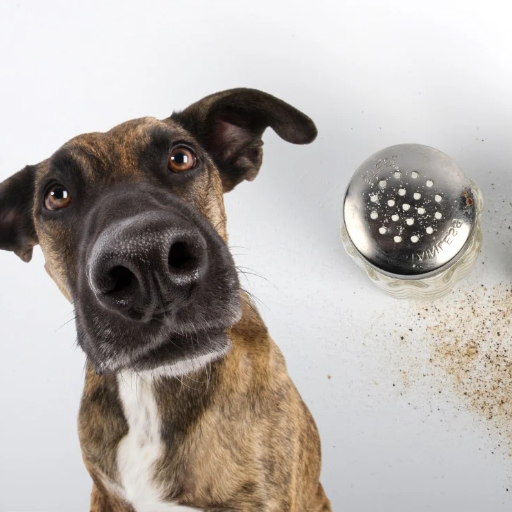Buprenorphine is a medication used quite frequently in veterinary medicine, particularly in dogs after an operation, injury, or some painful conditions. Although it works excellently in reducing pain, buprenorphine’s abuse potential and side effects warrant safety mechanisms in practice, and more importantly, understanding of them on the part of owners of the pets. The objectives of this article are three- to review literature on the effects of buprenorphine on dogs, its mechanism of action and what would be vital precautions to be taken. When well understood, pet owners will be able to take the right decisions and work closely with their veterinarian for the dog’s good health in the overall context.
What is Buprenorphine and How Does It Work for Dogs?

All About Buprenorphine as Pain Reliever
Buprenorphine binds to the desired receptor and decreases the perspective of pain but does not produce the effects of strong Opioids. It is used in dogs with moderate to severe pain mostly due to surgical wounds or any traumatic injuries. Medications target the mu-opioid receptors in the central nervous system to produce an analgesic effect. Buprenorphine has a number of advantages. Among these is its relatively high action period which means that there would be less buprenorphine doses required for the same amount of analgesic effect. It also carries less risks of side effects if taken correctly through the injected route which appeals to large number veterinary practitioners.
The Mechanism of Buprenorphine Administration in Dogs
I’d say that buprenorphine does offer pain relief in dogs, as it attaches to the mu-opioid receptors located in their central nervous system. This attachment mildly inhibits the flow of pain signals, generating an observable pain relief. What I find one of the remarkable benefits of buprenorphine is its durability; because of this I have to give it less often while maintaining good pain relief for the dog. Moreover, when properly utilized, it appears to be less likely to cause severe side effects and thus is a good and safe drug for pain management in veterinary practice.
What Are the Common Side Effects of Buprenorphine in Dogs?

Mild Side Effects to Conversely Consider
Buprenorphine’s adverse effects for dogs are generally minor and are well tolerated in pups; however, pet owners and practitioners should be cautious around such effects. Drowsiness is another side effect caused by because the drug is acting on the cns, and the dose was probably sedative in nature. Other side effects reported are low level of appetite or even vomiting in some affected dogs. Dryness of constipation innocently can be another concern due to depressed gastrointestinal motility caused by opioids. These effects are usually of short duration and relieve with time or when the treatment is shortcut. To ensure that your dog’s well-being is safeguarded while treating them and that they are comfortable relative to the treatment plan, it is most noteworthy that these symptoms need to be closely monitored alongside a consultation with a veterinarian if they do worsen or enhance.
Buprenorphine is Opioid – Some Risks After Taking The Medicine
It is true that buprenorphine is safe to use since the use of this medicine is not without dangers. It is recommended to seek immediate veterinary attention if any of the signs or side effects are experienced. Extreme respiratory depression and shallow or labored breathing are some of the most common effects and signs, especially among dogs that are too tiny or have other pre-existing conditions. When dogs become overly sleepy or don’t respond to things, odds are, they are experiencing a negative effect due to the medicine. There have been rare cases where a dog may have developed some kind of allergic reaction swelling or hives. All the signs and symptoms above should not be ignored and the medicine should be stopped immediately and a qualified vet doctor should be sought out. A constant consultation with the vet and other precautions can assist in ensuring that a dog is out of danger during the whole treatment.
Overdosing of Buprenorphine in Dogs
If you perceive the risk of buprenorphine overdose in your dog, it is important to make an effort to understand the signs and how to act. Taking into my consideration pet owners’ testimonies, the main manifestations include deep stupor or twilight state which makes dogs very difficult to awaken or are completely unresponsive. Other dogs too may display signs of severe respiratory depression in which thermoregulation of the body becomes impossible. Other signs are tiny pinpointed pupils (miosis) and ataxia which cause your dog to stagger about and has difficulty standing or walking. The first step which I would do in such a case with my dog is to call for my vet or the nearest veterinary clinic centre to get in a bout with them on next steps since my dog would already smell the medication on my hand. It is important to note that in such critical cases, time is important. You can even minimize the risk of a serious dosage type. One little tip for you is that always keep the phone number of your vet or a nearby pet medical center stored in phone.
When Should Buprenorphine Not Be Used in Dogs?

Existing medical conditions preventing use of buprenorphine
In dogs, if buprenorphine is never used in certain pre-existing conditions like severe liver disease, as the drug is metabolized in the liver and might worsen the condition. It may also not be appropriate for dogs with significant respiratory problems since buprenorphine is known to cause respiratory depression. In order to safely administer buprenorphine, your veterinarian must understand your dog’s complete medical profile, including chronic diseases and medications taken at the moment including any history of the disease.
Drug Interactions to Be Aware Of
There are situations that could arise when buprenorphine may combine with other medications. These interactions may pose several risks, including negative side effects and reduced effectiveness of the medications. For example, the combination of buprenorphine with other central nervous system (CNS) depressants such as sedatives, tranquillizers, or certain anesthetic agents may increase the risk of excessive sedation and respiratory depression in your Dog. Furthermore, MAOIs in conjunction with buprenorphine may increase the risk of excessive and dangerous fluctuations in blood pressure and other side effects, as well, Medications that can adjust liver enzymes, including antifungal or antibiotic medications, can also have an influence on the biotransformation process of buprenorphine, thereby enhancing or decreasing such effects. To avoid these risks, prior to any procedure and before administering buprenorphine, inform the veterinarian of other medications your dog is taking; this includes natural supplements and over-the-counter medications. This will help them rule out any overarching possible interactions and modify the treatment appropriately for your dog’s safety and well being.
Buprenorphine Use in Canines Suffering from Liver and Kidney Disorders
If your dog has respiratory problems or suffers from chronic diseases, I would suggest that you go through these aspects with your veterinarian first since Canines are known to be quite active and prone to injuries. I’m well aware that how much of a concern it is in ensuring that the medications your pet has been prescribed, particularly buprenorphine, work as intended and do not interfere or worsen any existing health conditions your dog may have. In terms of assessing the state of the body of the canine, the veterinarian in charge will examine if the planned benefits would outweigh the possible danger posed to the body. In this manner all possible limitations and side effects can be treated. Certainly, tweet them opioid will have harmful repercussions for a canine suffering from either liver or kidney disease owing to the incompetent functioning body parts. Thus treatment and procedures which do do the job will be considered instead. To conclude, always have a thorough discussion with your vet who understands the due importance of the medication your dog may be getting explicitly for his comfort, and safety purposes.
How Is Buprenorphine Administered to Dogs?

Dose Administration Procedures in Detail
Usually, buprenorphine medication is given to dogs either via the mouth or through the skin because the medication should be inside the mouth or underneath the tongue, or given using a syringe, as a veterinarian suggests. Some of the reasons the dosage is adjusted by the vet include the weight, health condition and pain level of your dog. It’s important to stick to the rule of the vet closely and give the medication according to how it was directed to ensure safety and efficiency.
Steps to Take if You Forget to Give a Dose
In case if you have missed a dose of buprenorphine for your dog, there is a reason to keep calm and not panic. Call your veterinarian after missing the dose and kindly ask for advice, they will listen to you and provide you with instructions specifically tailored for your dog’s condition and their schedule. The general advice is that you should not increase the dose to compensate, as this would be an overdose solely intended to make up for the skipped dose and lead to side effects. In place of this, your veterinarian may say that you should give the dose that you have missed the minute you remember unless it is closer to the next scheduled shot. At all times protect clear lines of communication with your veterinarian so that your dog is treated in a safe and sound manner and the process stays effective as well.
NaBUTO Patch : An Innovation In A Transdermal System
An additional transdermal patch that is available only in some regions is the NaBUTO transdermal patch that has got FDA approval. This patch contains buprenorphine which treats the chronic pain in dogs which has not responded to any other treatment protocols. This patch has to be applied to the skin only and has been formulated for slow sustained release over 5 days. One NaBUTO patch will control the pain for five days and will not require any further dosage so the dogs don’t have to be stressed by repeated administrations of medication. Treatment of pain in dogs has always posed its own challenges as many a times the dogs are not able to take oral medication and the patch overcomes this problem effectively. The veterinaries are well aware regarding dosage and patching of the patch so there is no excessive medication given to the dogs which causes increased suffering from the adverse effects of the drug. Additionally, family members should take adequate precautions so that there is no accidental exposure to the patch.
What Should I Tell My Veterinarian Before Using Buprenorphine?

Why You should Inform Your Vets About Your Dog’s Medical History
In a discussion around buprenorphine use with a veterinarian taking a high-quality medical history of your dog is necessary structure. This includes excessive mention including kidney or liver malfunction those organs facilitate with the medication metabolism. Report any such history regarding allergies or adverse medication use concerning your dog’s medical experience. In addition, provide detailed information about all drugs, vitamins and even non prescription products that your dog has taken as they may have an effect on buprenorphine. Pertaining to your pet’s age, weight, and other encouraging health parameters should also be relayed to assist the veterinarian in selecting the appropriate dosage and other treatment protocols for your dog. In providing such relevant information, your dog stand to pose little risk when embarking on the treatment regimen and all is expected to work well.
Going Over Pet’s Medical History
Apart from sharing the painful past, a pet parent needs to explain every detail. That might seem normal to a human but even the tiniest information such as what flea medication does the dog use or what joint support supplement is given matters. It is the duty of the Pet’s owner to reveal this information. It allows the veterinarian to have a clear picture and context and helps in most cases to avoid unnecessary complications. If there are any uncertainties, say over the exact dosage of some product just take the container or reasonable sized list with you – you are less likely to forget anything that way. Being so diligent and detailed makes sure that your pet has the best and most effective pain management possible.
Reference sources
Frequently Asked Questions (FAQs)
Q: What is Buprenorphine and how is it used for cats and dogs?
A: Animals like dogs and cats which suffer from moderate to mild pain can benefit from an opiate known as Buprenorphine. It’s an opioid that can be taken through the mouth or other entryways. It’s important to mention that buprenorphine falls in the category of controlled drugs and should be taken care of with safety.
Q: What are some side effects of Buprenorphine in animals?
A: The common symptoms that can arise after taking Buprenorphine include Vomiting, constipation, diarrhea, drowsiness and decrease in appetite. Over dosage or buprenorphine use in weak animals can lead to respiratory depression. Always keep an eye on your pet after taking medication and let you vet know of any unexpected issues or symptoms.
Q: Are there any types of Pain where buprenorphine is not suitable for dogs?
A: Animals tend to suffer from mild, moderate and severe pain. Dogs and even cats could take Buprenorphine for handling mild or moderate pain as it is effective for that. But if the pain is about severe of certain category then Buccal membrane applicator will not be able to achieve the results sought. So for particular pain conditions, it is best advised to take guidance from your pet’s veterinarian about the viability of buprenorphine.
Q: Are there any animals for which buprenorphine should not be administered?
A: Use of buprenorphine should be carefully practiced with animals suffering from head injury, having a history of respiratory diseases or suffering from liver ailments. Animals that are pregnant or are nursing might also not be good candidates for using buprenorphine. It is best, prior to beginning represent this substance, to inform your veterinarian of any medications, supplements or herbal therapies your pet has taken in advance.
Q: What should I do if I suspect an overdose of buprenorphine in my pet?
A: In order to do the right thing in case of overdosing on buprenorphine, you should reach out to your veterinarian or animal care services. Combining medications like this can make the animal’s condition seem worst and it’s when the animal needs medical attention the most. Seems like buprenorphine overdose can be serious so always ensure visiting a veterinarian right after you witness those signs as well.
Q: What are the methods of using buprenorphine for dogs and cats?
A: In dogs and cats, buprenorphine is given subcutaneously, orally, or across the oral mucosa (inside the cheek). The choice of administration route is determined by the particular formulation and the veterinarian’s suggestion. Buprenorphine is also available in some long-acting patches for cats. As with all other medications, it is important to never deviate from the instructions given by your animal’s veterinarian when administering buprenorphine.
Q: Is the use of buprenorphine allowed alongside other medicines?
A: There are many different medications that could be prescribed alongside buprenorphine, but it is important that the possibility of interactions is considered with caution to the dog/cat owner. This is why it is essential to explain to a veterinarian the medications that the dog or cat is taking. Given the buprenorphine is frequently used alongside other stronger opioids or central nervous system depressants, it is important to apply the drug with caution. Whenever there is additional medication required to combine always speak to your veterinarian to clear any issues.









